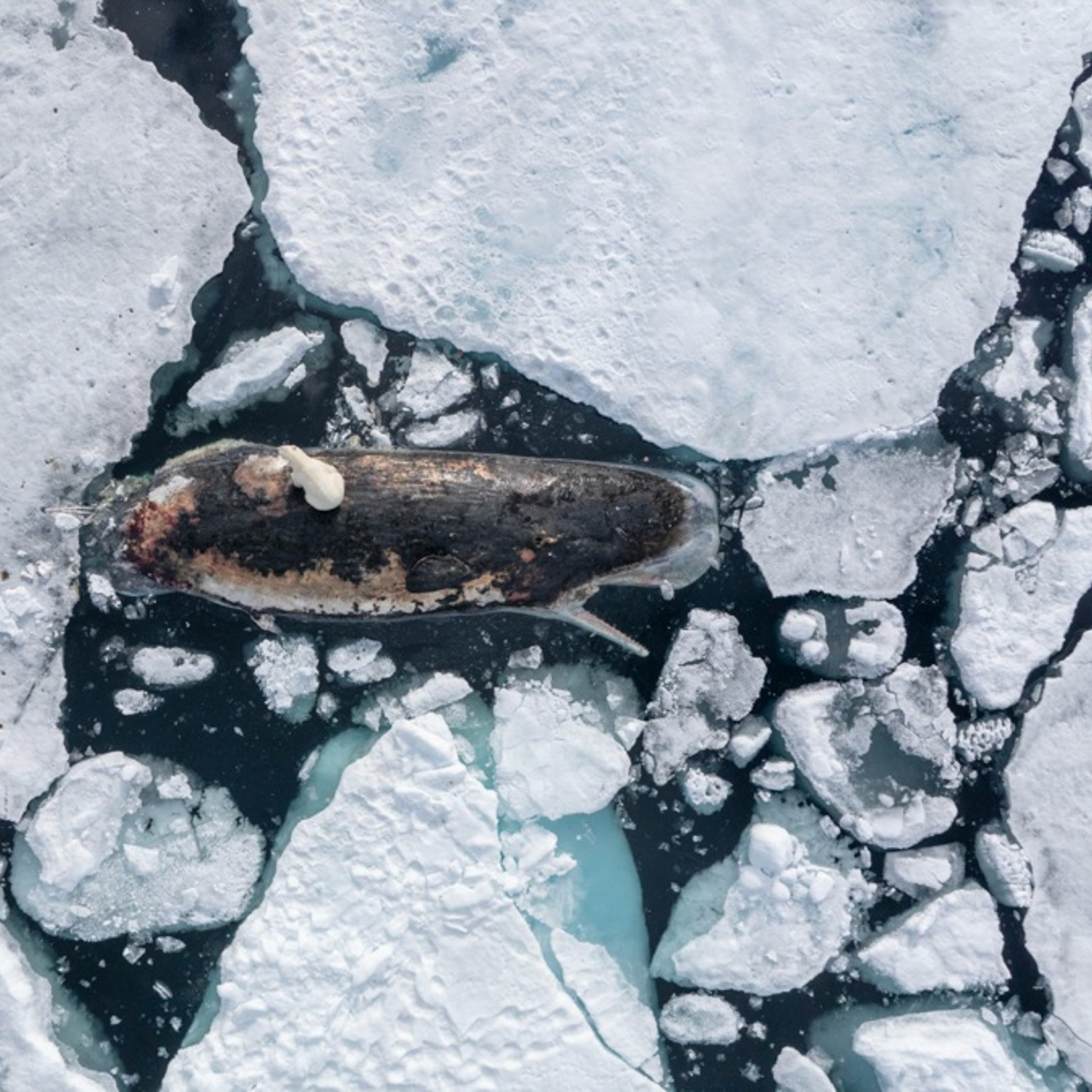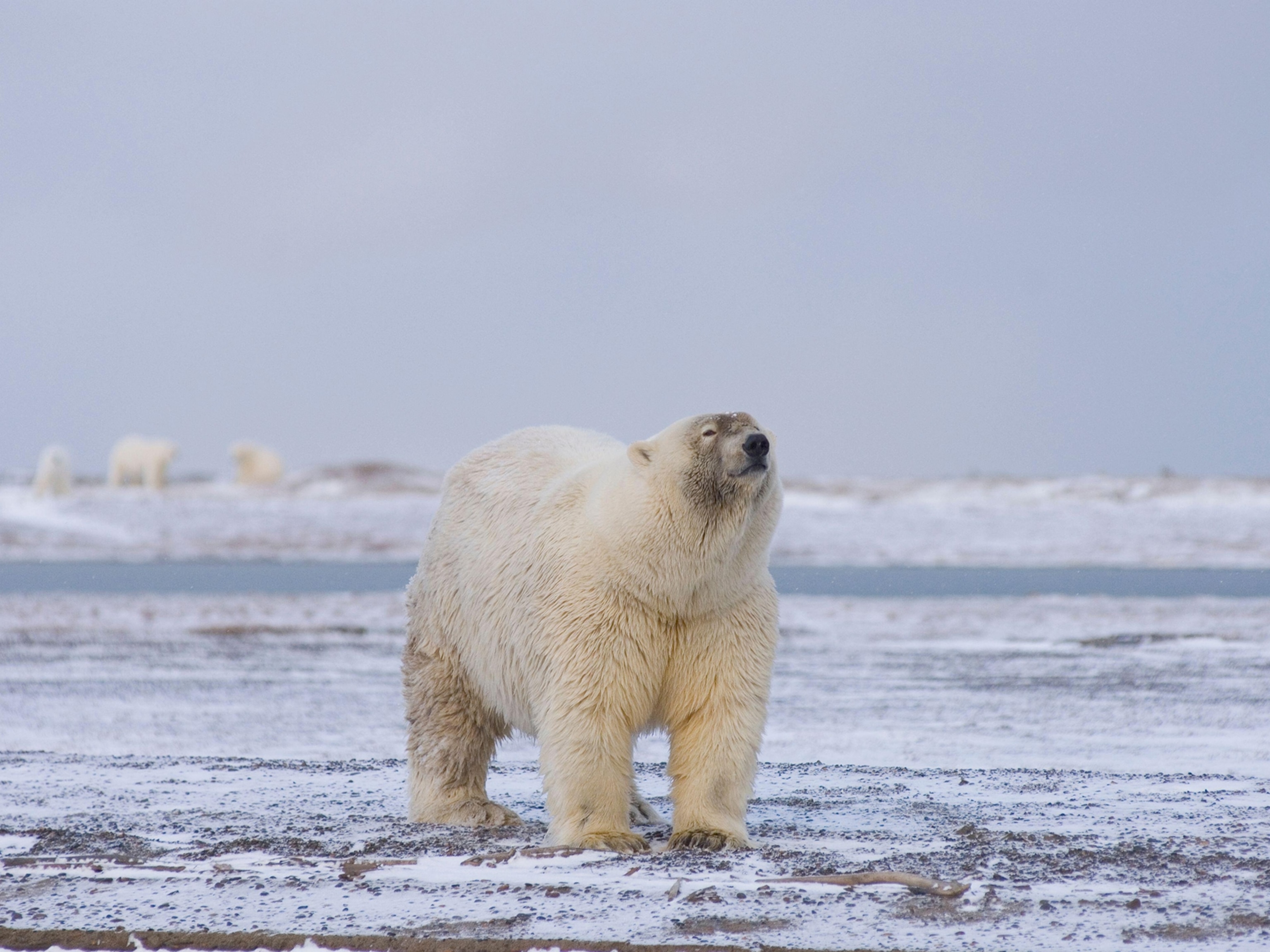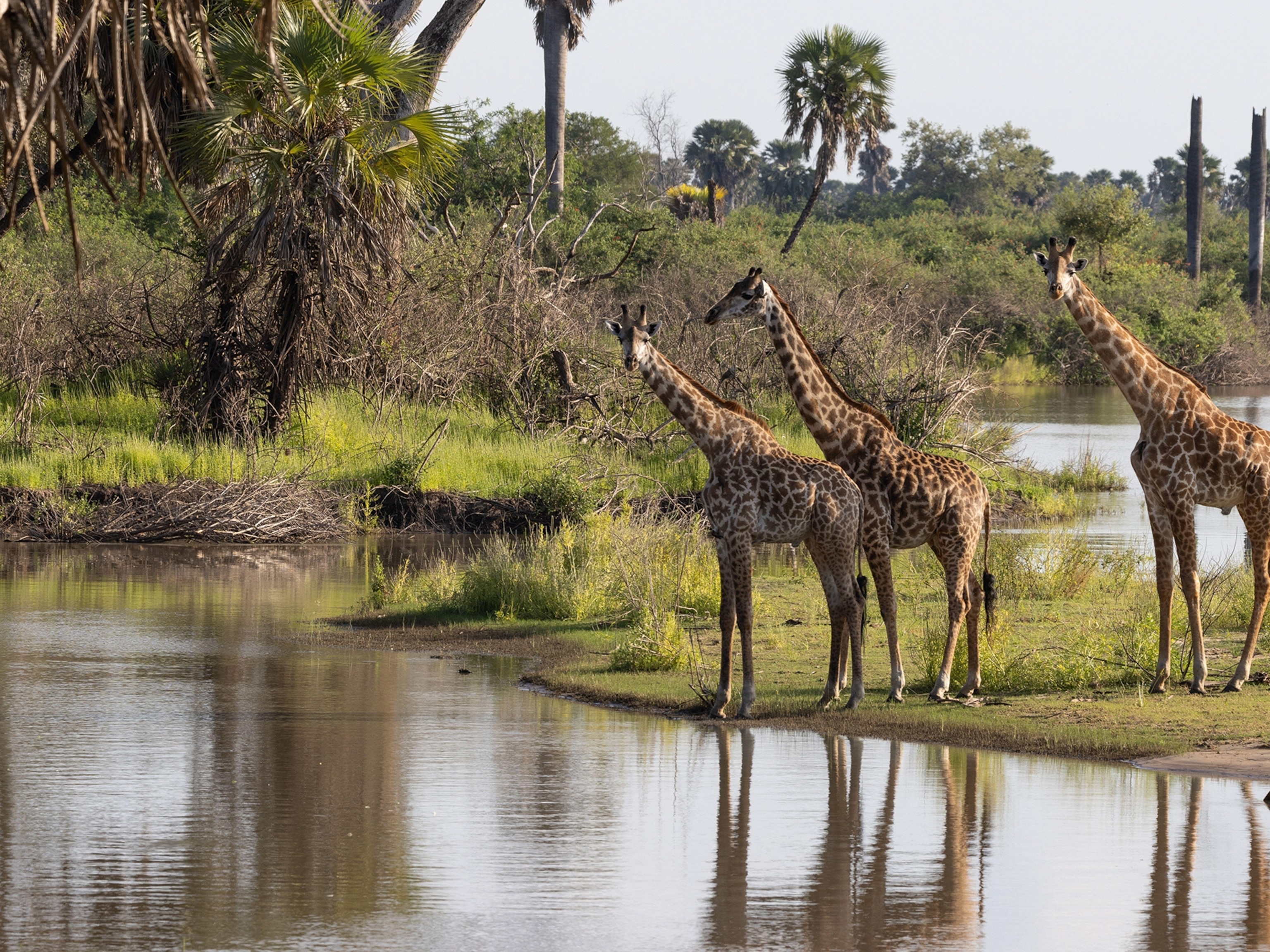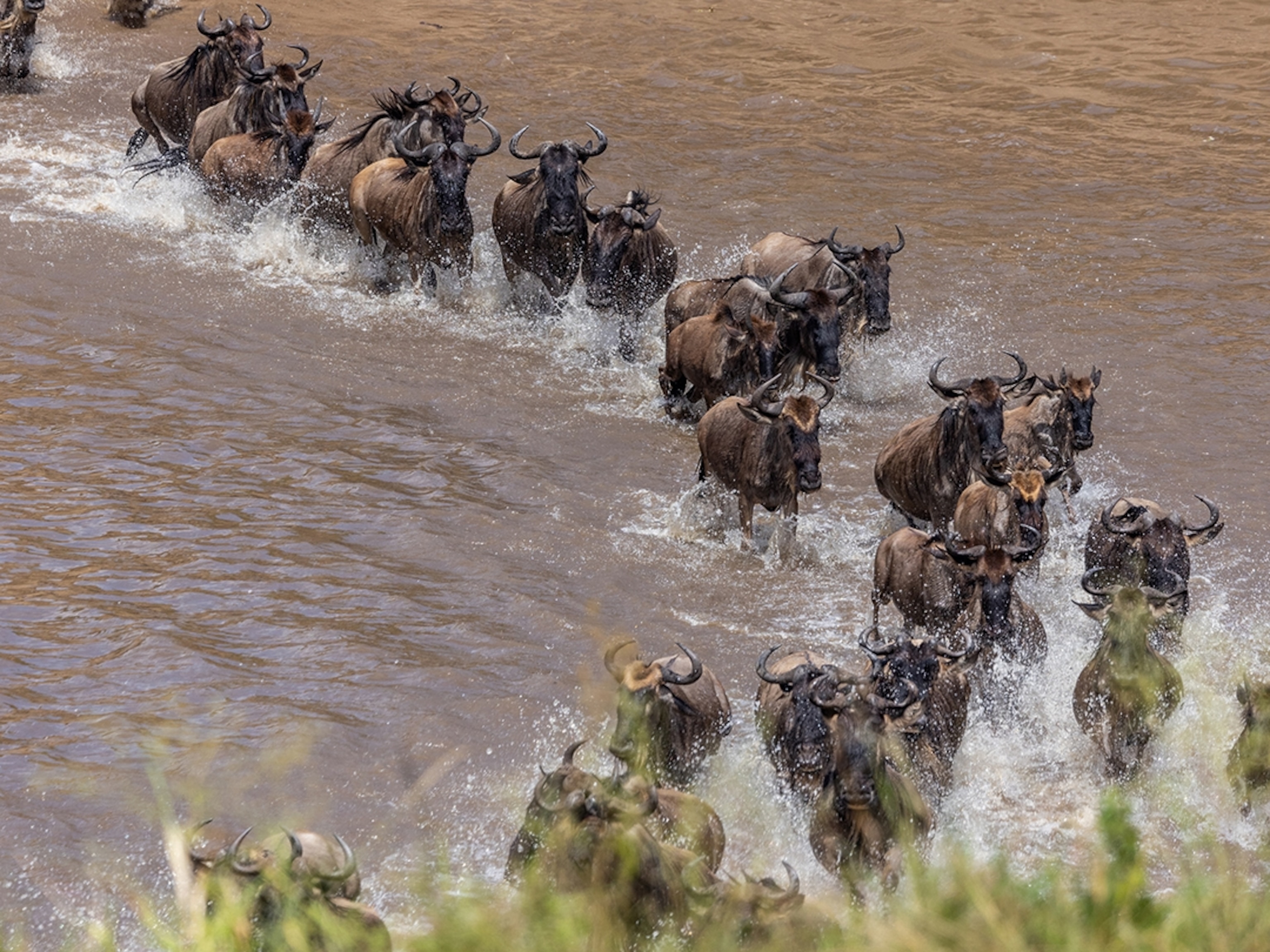
Annual Polar Bear Migration Under Way: How It Works and How Climate Change Could Be Impacting It
Melting sea ice means big changes for the world's 20,000 polar bears.
In the past month, hundreds of polar bears have strolled past a small town in Canada.
It's part of their annual migration back to Hudson Bay, where sea ice is reforming after months of summer melt. To get to the ice each autumn, they traverse Churchill, Manitoba—the "polar bear capital of the world."
These animals are the most studied group of polar bears on Earth. The renowned Ian Stirling, now retired from the Canadian Wildlife Service, began his groundbreaking research here 40 years ago.
Because this population comes ashore each year, says Steven Amstrup of Polar Bears International, they're relatively easy to count. "Searching for a white bear on green grass and brown rocks is easier than searching for [it] out on the white sea ice."
Churchill has only about 900 people, but several hotels. The polar bear migration is a huge tourist draw, as are regular sightings of beluga whales at the mouth of the Churchill River. Some 10,000 visitors flock here each year.
As the seasonal freeze approaches, polar bears gradually gather in the coastal areas around Cape Churchill. This gives people the chance to see them in the wild from the safety of giant tundra buggies, all-terrain vehicles that take tourists out from late October until late November.
While bear attacks in the town are uncommon—only a handful have occurred in the past 50 years—there have been three this year. To keep bears away from Churchill's center, residents honk their horns, sound sirens, and fire shotguns loaded with rubber bullets. The town also closed its dump recently, which had been a big draw for the bears.
Sea Ice: Home and Hunting Platform
Sea ice that forms annually is key to polar bear survival. It provides a vital platform to hunt ringed and bearded seals, which helps make Ursus maritimus the largest bear in the world and the top Arctic predator.
When the sea ice melts in the summer, polar bears make their way to land, where they save energy with what some have called a walking hibernation.
But today the Hudson Bay population—and the rest of the world's 20,000 to 25,000 polar bears—is being affected by changes. Since 1979, sea ice cover has declined by about 30 percent in the Arctic. As greenhouse gases continue to warm the Earth, Amstrup says, polar bears are being forced ashore for longer periods of time.
The bears of Hudson Bay, for instance, now spend an average of nearly 30 days longer on land than they did 30 years ago. Stirling and his colleague Andrew Derocher found that bears lose nearly two pounds of body weight each day they're on land—meaning the bears here are, in effect, 60 pounds lighter on average than they were three decades ago.
Stirling also found that lighter bears produce smaller cubs, which can struggle to survive. Since 1987, there has been a 22 percent decline in the Churchill polar bear population.
Because polar bears depend on a habitat "that literally melts as temperatures rise," Amstrup said, "they are perhaps the most vulnerable of any species to a warming world."
If nothing changes, he says, two-thirds of all polar bears will be gone by 2050—and perhaps extinct in the wild by the end of the century.
You Can't Go Home Again
According to fossil evidence, polar bears today look about the same as they did 120,000 years ago. At some point—perhaps during the frigid Pleistocene—they made the move from land to sea ice.
As the ice melts, some wonder if polar bears could readapt permanently to land. Amstrup says it's unlikely. And even if they could, it couldn't happen fast enough. "They can't undo hundreds of thousands of years of evolution in 50 or 100 years."
For one thing, there probably isn't enough suitable food on land for these huge animals—males weigh up to 1,200 pounds (544 kilograms), females 650 (205 kilograms). While goose eggs and a few other terrestrial food sources now supplement polar bear diets, there aren't enough of these to be sustainable.
A Collective Problem
Because polar bears depend so heavily on the sea ice, their plight is more visible than that of other species. But climate change is "really going to affect all life on Earth," says Amstrup.
He says a recent paper predicts "a sea-level rise of 2.3 meters (7.5 feet) for every degree of Celsius temperature rise."
"Because we could have two degrees Celsius in temperature rise by the middle of the century, that prediction is serious," Amstrup said. "Geologic records actually show that the last time the Earth was a degree warmer than it is now, the sea level was six to seven meters (20 to 23 feet) higher than it is now."
That could cause major coastal flooding—and vast displacement problems. Millions of people living near sea level around the world could be dramatically affected.
Economy and Ecology
Polar bear conservation faces a unique challenge. "The traditional model is that you set aside a reserve, or build a fence, to protect critical habitat," explains Amstrup. "But we can't really build a fence to protect the sea ice from rising temperatures."
The best way to ensure polar bear survival, he says, would be to curtail the rise of greenhouse gas emissions. Amstrup believes the only effective way to do that would be to charge a price, or a tax, for the carbon dioxide that humans are emitting.
"We're extracting fossil fuels, the primary productivity of the past, to subsidize our current economy," Amstrup said, "and we're expecting future generations to pay the price. When we utilize that ancient carbon, we should also pay that tax."
If policies required people to pay the "true costs" of using carbon, he says, it would "level the playing field, making renewable energy and other sustainable practices more competitive. The resulting competition would, in turn, stimulate our ingenuity, create jobs, and preserve a climate that will support polar bears and the rest of us."
Several European countries have already implemented carbon taxes. The United States, however, has not.
"It's not just an ecological problem," Amstrup said. It's "an economic problem. We have to remember that humans are not just observers of ecology; we're participants in it. Everything is connected. What we do in our economy directly influences the ecology of the earth."
The polar bear is an indicator species for the Arctic ecosystem. The challenges they're facing in Churchill today may one day be ours as well.
Do you think polar bears are important for the planet? Are you concerned about impacts to humans from climate change? What are your thoughts on paying a carbon tax?
Add your thoughts in the comments below.
Christy Ullrich Barcus is the editor of National Geographic's Polar Bear Watch.








